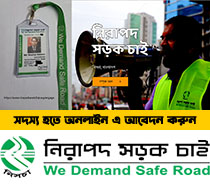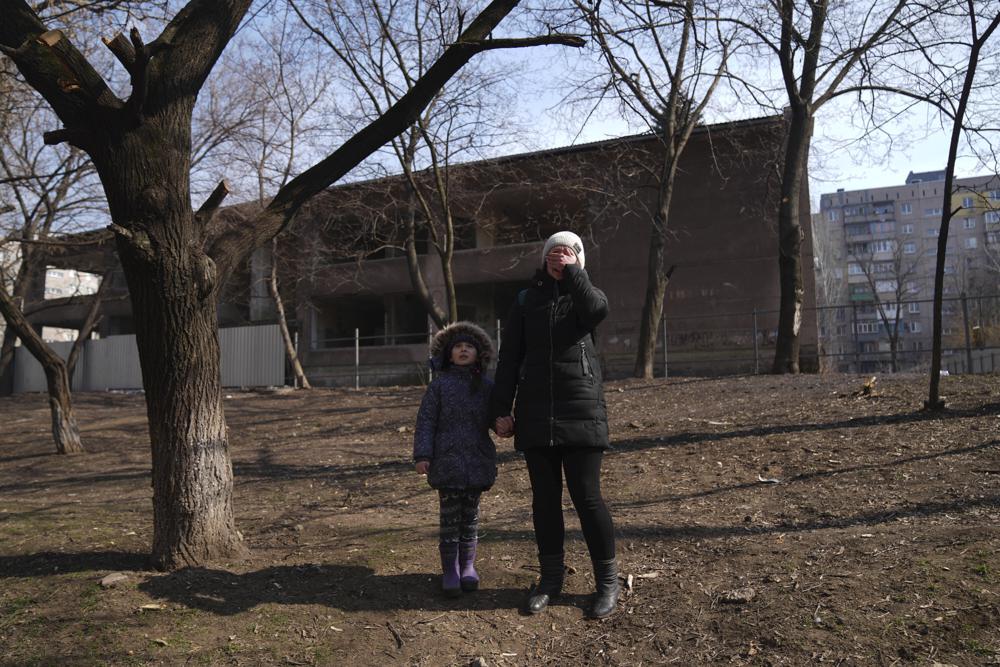Russian and Ukrainian negotiators held a new round of talks on Monday, even as Russia’s military forces kept up their punishing campaign to capture Ukraine’s capital with fighting and artillery fire in Kyiv’s suburbs.
After an airstrike on a military base near the Polish border brought the war dangerously close to NATO’s doorstep, the talks raised hopes for progress in evacuating civilians from besieged Ukrainian cities and getting emergency supplies to areas without enough food, water and medicine.
“Everyone is waiting for news. We will definitely report in the evening,” Ukrainian President President Volodymyr Zelenskyy said in a new video address.
The negotiations taking place by video conference are the fourth round involving higher-level officials from the two countries and the first held in a week. The previous discussions took place in person in Belarus, and did not produce breakthroughs to end the fighting in Ukraine or lasting agreements on humanitarian routes.
“Communication is being held, yet it’s hard,” Ukrainian presidential aide Mykhailo Podolyak tweeted along with a photo of the two sides meeting by video link. Earlier, Podolyak said the negotiators would discuss “peace, ceasefire, immediate withdrawal of troops & security guarantees.”
Air raid alerts sounded in cities and towns all around the country overnight, from near the Russian border in the east to the Carpathian Mountains in the west, as fighting continued on the outskirts of Kyiv. Ukrainian officials said Russian forces shelled several suburbs of the capital, a major political and strategic target for their invasion.
Ukrainian authorities said two people died and seven were injured after Russian forces struck an airplane factory in Kyiv, sparking a large fire. The Antonov factory is Ukraine’s largest aircraft manufacturing plant and is best known for producing many of the world’s biggest cargo planes.
Russian artillery fire also hit a nine-story apartment building in the northern Obolonskyi district of the city, killing two more people, authorities said. Firefighters worked to rescue survivors, painstakingly carrying an injured woman on a stretcher away from the blackened and still smoking building.
A town councilor for Brovary, east of Kyiv, was killed in fighting there, officials said. Shells also fell on the Kyiv suburbs of Irpin, Bucha and Hostomel, which have seen some of the worst fighting in Russia’s stalled attempt to take the capital, local officials said.
Airstrikes were reported across the country, including the southern city of Mykolaiv, and the northern city of Chernihiv, where heat was knocked out to most of the town. Explosions also rang out overnight around the Russian-occupied Black Sea port of Kherson.
In the eastern city of Kharkiv, firefighters doused the remains of a four-story residential building on a street of apartments and shops. Ukrainian emergency services said a strike hit the building, leaving smoldering piles of wood and metal. It was unclear whether there were casualties.
The surrounded southern city of Mariupol, where the war has produced some of the greatest human suffering, remained cut off despite earlier talks on creating aid or evacuation convoys.
“The city is encircled and civilians today cannot make it out,” said Robert Mardini, director-general of the International Committee of the Red Cross. He said the situation for besieged civilians was “nothing short of a nightmare.”
A pregnant woman who became a symbol of Ukraine’s suffering when she was photographed being carried from a bombed maternity hospital in Mariupol has died along with her baby, the Associated Press has learned. Images of the woman being rushed to an ambulance on a stretcher had circled the world, epitomizing the horror of an attack on humanity’s most innocent.
Ukraine announced plans for new humanitarian aid and evacuation corridors on Monday, although ongoing shelling caused similar efforts to fail in the last week, including on Sunday.
The U.N. has recorded at least 596 civilian deaths since Russia invaded Ukraine on Feb. 24, though it believes the true toll is much higher. Millions more people have fled their homes, with more than 2.8 million crossing into Poland and other neighboring countries in what the U.N. refugee agency has called Europe’s biggest refugee crisis since World War II.
Since launching its invasion of Ukraine, Moscow has waged a multi-pronged attack. Russia’s military is bigger and better equipped than Ukraine’s, but its troops have faced stiffer than expected resistance, bolstered by Western weapons support that has frustrated Russian President Vladimir Putin.
With their advance slowed in several areas, they have bombarded several cities with unrelenting shelling, hitting two dozen medical facilities and a large number of apartment buildings.
The war expanded Sunday when Russian missiles pounded a military training base in western Ukraine that previously served as a crucial hub for cooperation between Ukraine and NATO.
The attack killed 35 people, Ukrainian officials said, and the base’s proximity to the borders of Poland and other NATO members raised concerns that the Western military alliance could be drawn into the the largest land conflict in Europe since World War II.
Speaking Sunday night, Ukrainian President Volodymyr Zelenskyy called it a “black day” and again urged NATO leaders to establish a no-fly zone over his country, a move the West has rejected for fear of starting a direct confrontation with nuclear-armed Russia.
“If you do not close our sky, it is only a matter of time before Russian missiles fall on your territory. NATO territory. On the homes of citizens of NATO countries,” Zelenskyy said.
Ukraine said Moscow’s troops nevertheless failed to make major advances between Sunday and Monday. The Russian Defense Ministry gave a different assessment, saying its forces had advanced 11 kilometers (7 miles) and reached five towns north of Mariupol, whose capture could help Russia establish a land corridor to Crimea, which it seized from Ukraine in 2014.
Russia’s latest attack on its ex-Soviet neighbor has shaken the post-Cold War security order, with unpredictable and dangerous consequences.
The U.S. says Russia asked China for military equipment to use in Ukraine after the West imposed severe economic sanctions to hobble the Russian economy and the invasion met stronger-than-expected Ukrainian resistance.
The request heightened tensions about the ongoing war ahead of a Monday meeting in Rome between top aides for the U.S. and Chinese governments. U.S. President Joe Biden is sending his national security adviser to Rome to meet with a Chinese official over worries that Beijing is amplifying Russian disinformation and may help Mosc ow evade Western economic sanctions.
In his talks with senior Chinese foreign policy adviser Yang Jiechi, Sullivan will be looking for limits in what Beijing will do for Moscow.
Russia’s cruise-missile strike on the military base in western Ukraine also has international significance. The International Center for Peacekeeping and Security near Yavoriv has long been used to train Ukrainian soldiers, often with instructors from the United States and other NATO members. In addition to the 35 deaths, 134 people were wounded in the attack, the Ukrainian Defense Ministry said.
The base is less than 25 kilometers (15 miles) from the Polish border and has hosted NATO training drills, making it a potent symbol of Russia’s longstanding fears that the expansion of the 30-member Western military alliance to include former Soviet states threatens its security — something NATO denies.
NATO said Sunday that it currently does not have any personnel in Ukraine, though the United States has increased the number of U.S. troops deployed to NATO member Poland, Sullivan, the White House national security adviser, said the West would respond if Russia’s strikes travel outside Ukraine and hit any NATO members, even accidentally.
Ina Padi, a 40-year-old Ukrainian who crossed the border with her family, was taking shelter at a fire station in Wielkie Oczy, Poland, when she was awakened by blasts Sunday morning from across the border that shook her windows.
“I understood in that moment, even if we are free of it, (the war) is still coming after us,” she said.



